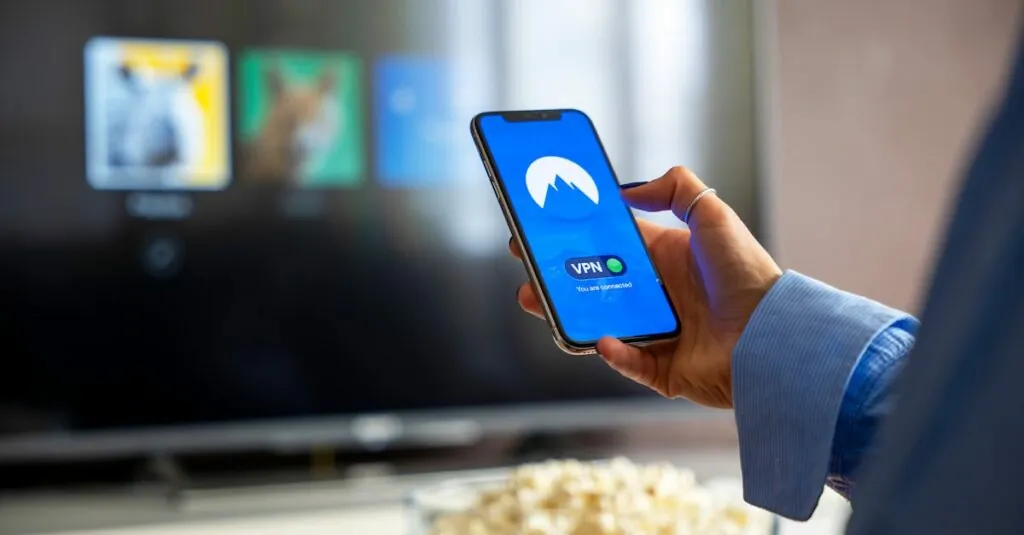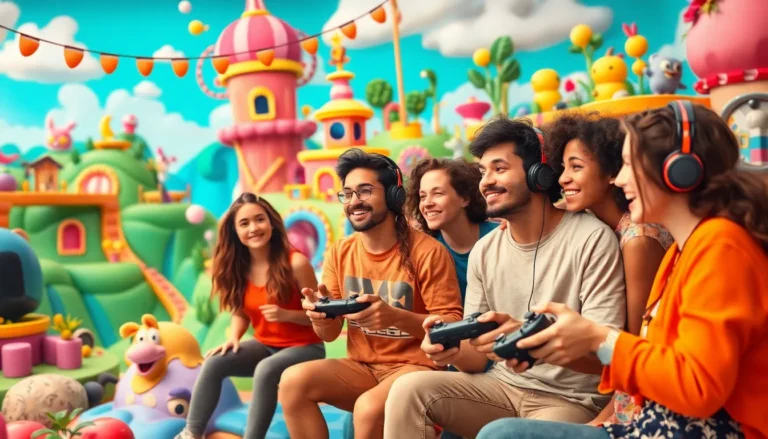Table of Contents
ToggleEver tried sending a video from your shiny iPhone to a friend’s Android and ended up feeling like you’re trying to teach a cat to fetch? It’s frustrating when technology doesn’t play nice, especially when you’ve got that perfect clip ready to share. The truth is, Apple and Android might as well be speaking different languages when it comes to file transfers, leaving many users scratching their heads.
But don’t worry; you’re not alone in this digital dilemma. Understanding why these two tech giants struggle to communicate can save you from future headaches. Let’s dive into the quirks of video sharing between iPhones and Androids and explore some clever workarounds that’ll have you sharing those hilarious moments in no time.
Common Issues When Sending Videos
Users often face challenges when sending videos from iPhones to Android devices. These common issues can create confusion and frustration.
File Format Compatibility
Different platforms use various file formats for videos. iPhones typically utilize .MOV or .HEVC formats, while Android devices often support .MP4 or .AVI. Incompatibility arises when users attempt to send video files that one platform does not support. This discrepancy can prevent successful transfers, resulting in error messages. Users should check the format of their videos and convert them if necessary, ensuring compatibility across devices.
Size Limitations
Video file sizes can hinder sharing capabilities. iPhones often capture high-resolution videos, which may exceed the size limits imposed by messaging apps. For instance, many messaging services cap file sizes at 25 MB. When users try to send larger files, the transfer fails or the video compresses, potentially degrading quality. To overcome this obstacle, users can compress their videos before sending or use cloud storage options that allow larger file transfers.
Comparing iPhone and Android Systems
Understanding the differences between iPhone and Android systems clarifies the challenges when sharing videos. Each platform operates on distinct principles affecting video transfers.
Different Operating Systems
Apple’s iOS focuses on a closed ecosystem designed for smooth performance and security. Android, however, utilizes an open-source model offering flexibility and customization. File management differs significantly between these systems, leading to compatibility issues. iPhones favor .MOV and .HEVC formats, while Android devices support .MP4 and .AVI formats. Users may find that videos recorded on iPhones do not easily transfer to Android devices due to these inherent discrepancies. Recognizing these formats is essential for resolving sharing problems.
Messaging Protocol Differences
Messaging protocols on iPhone and Android contribute to transfer limitations. iMessage operates exclusively within the Apple ecosystem, facilitating seamless sharing among iOS users. Android devices rely on various protocols, including SMS and MMS, impacting video quality and size limits. For instance, MMS often reduces the quality of videos sent, hindering user experience. Moreover, large video files can exceed limitations set by these protocols, resulting in failed transfers. Understanding these differences aids users in choosing the right method for sharing videos across platforms.
Solutions to Transfer Videos
Multiple methods exist to effectively transfer videos from an iPhone to an Android device.
Using Cloud Services
Cloud services offer a convenient way to share videos across platforms. Users can upload videos to platforms such as Google Drive, Dropbox, or OneDrive. Once uploaded, they can share the link with the Android user, allowing easy access to download the video. This method supports various formats and eliminates size restrictions associated with messaging apps. Accessing shared links requires an internet connection, but this often ensures high video quality remains intact during the transfer.
Third-Party Applications
Third-party applications provide another efficient option for video transfer. Apps like Send Anywhere or SHAREit facilitate quick sharing of videos between iPhone and Android devices. Downloading the app on both devices is necessary, but once set up, users can share videos without worrying about format compatibility. These apps typically use Wi-Fi Direct for fast transfers, ensuring minimal quality loss. Additionally, many third-party applications offer compression options, allowing larger files to be sent easily.
Alternative Methods to Share Videos
Several alternative methods exist for sharing videos between iPhones and Android devices. These methods bypass common compatibility issues, making the sharing process smoother.
Email and Messaging Apps
Email and messaging apps serve as quick and user-friendly ways to transfer videos. Users can attach videos directly to emails, ensuring file size stays within limits. Many email services accept video files, but size restrictions typically cap attachments around 25 MB. For larger videos, instant messaging apps like WhatsApp and Telegram provide options for sharing. These platforms often employ compression techniques, allowing users to send videos swiftly. Quality may decrease, but this method remains effective for urgent sharing. Adjusting settings in these apps can optimize video quality, making it a practical choice for many users.
Using AirDrop Alternatives
AirDrop alternatives enable users to share videos seamlessly without relying on traditional methods. Apps like SHAREit, Send Anywhere, and Xender facilitate direct transfers through Wi-Fi or Bluetooth connections. Users prefer these alternatives due to their ease of use and lack of size limitations. Simply install the app on both devices, select the video, and initiate the transfer. The process typically completes quickly, retaining original quality in most cases. Relying on these solutions offers a straightforward way to share videos, making it a popular choice for cross-platform sharing.
Navigating the complexities of video sharing between iPhones and Android devices can be frustrating. However with the right tools and methods users can easily overcome these hurdles. By understanding file formats and utilizing cloud services or third-party apps users can ensure their videos reach friends and family without compromising quality.
Embracing these solutions not only simplifies the sharing process but also enhances the overall experience of connecting across different platforms. With a little effort users can enjoy seamless video sharing and keep their cherished moments alive.







